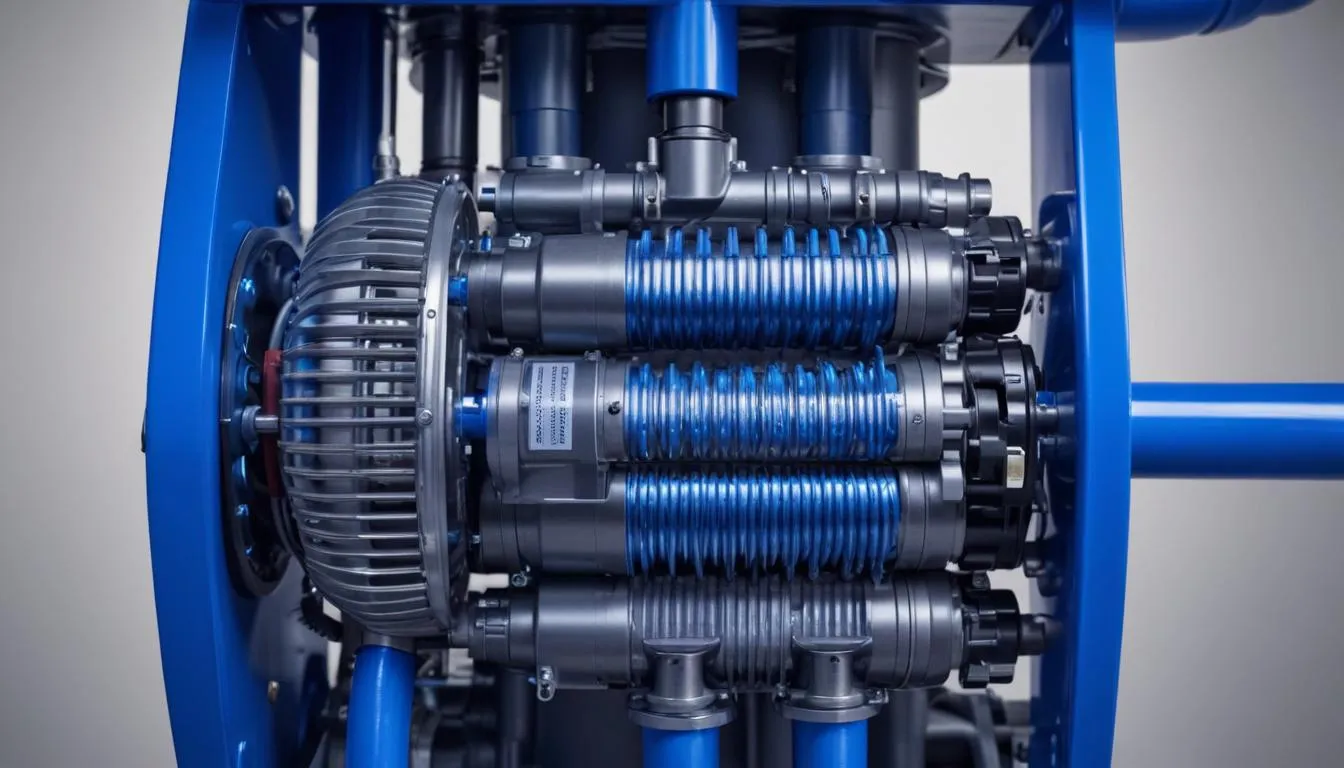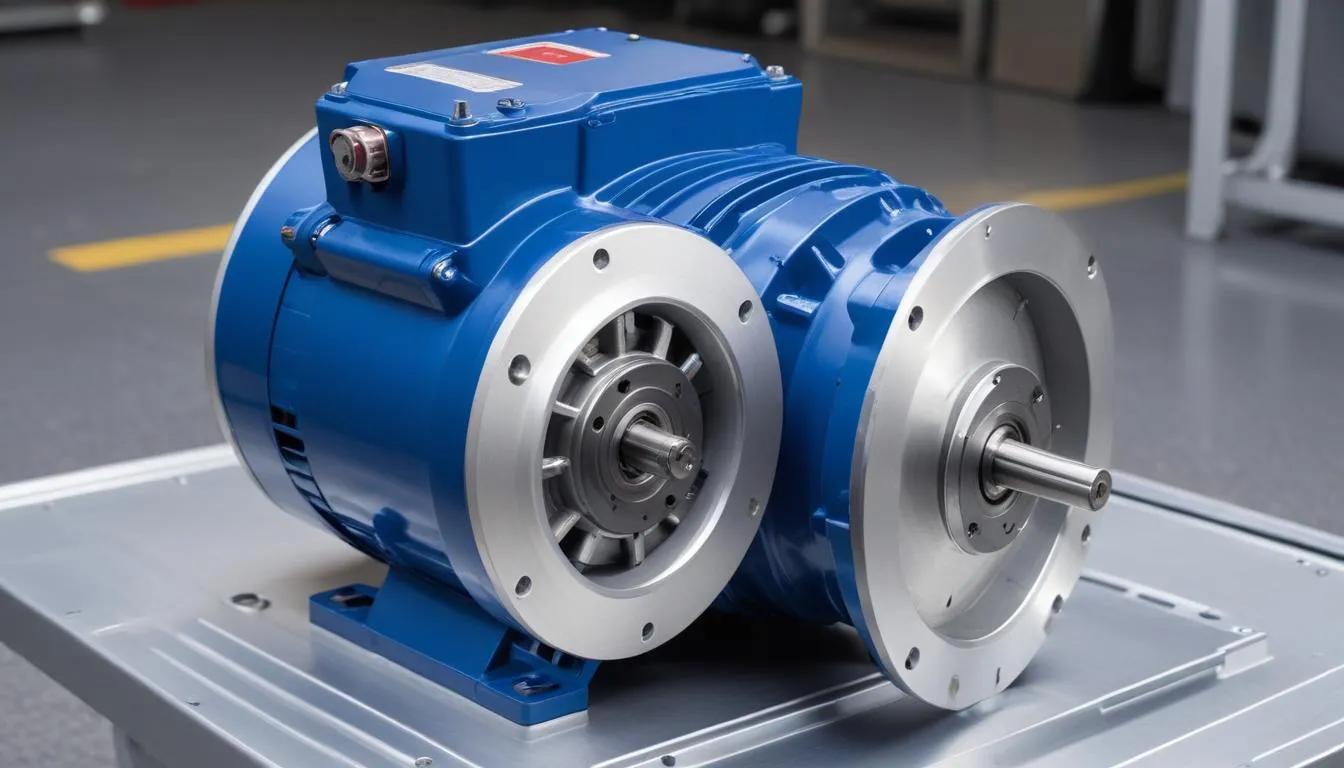 When selecting a drive for pumps, it is essential to understand the various types of drive systems available. There are several categories of pump drives, each with its unique characteristics, efficiency, and application suitability.
When selecting a drive for pumps, it is essential to understand the various types of drive systems available. There are several categories of pump drives, each with its unique characteristics, efficiency, and application suitability.
- Electric Drives: Electric drives are commonly used in many pumping applications due to their energy efficiency and lower operational costs. They convert electric energy into mechanical energy to drive the pump. In terms of efficiency, electric drives typically offer a high level of performance, especially in variable speed scenarios.
- Hydraulic Drives: Hydraulic drives utilize pressurized fluid to generate mechanical motion. They are ideal for heavy-duty applications requiring high torque and power. In environments where electric power is unavailable or impractical, hydraulic drives provide a robust alternative. However, their selection may involve considerations regarding fluid maintenance and system complexity.
- Pneumatic Drives: Pneumatic systems use compressed air or gas to operate the pump. These are less common for general pumping applications but are beneficial in environments where electrical hazards are a concern. Pneumatic drives can offer good efficiency in specific settings, such as food processing and chemical industries.
- Mechanical Drives: Mechanical drives, including gear and belt drive configurations, depend on physical components to transfer motion from a motor to the pump. While they can be lower in initial cost, their efficiency can vary significantly based on design and wear over time.
It is crucial to assess each drive type based on the specific application requirements, installation environment, and desired efficiency. Each drive’s operational characteristics and potential maintenance needs should play a significant role in the decision-making process during the selection. By thoroughly understanding these types, you can ensure that the chosen pump drive aligns with operational goals and efficiency targets.
Factors to Consider When Choosing a Drive
When choosing the right drive for pumps, several critical factors must be taken into account to ensure optimal performance and efficiency. A comprehensive evaluation of these elements can significantly impact the functionality and longevity of the pumping system.
- Application Requirements: The specific application where the pump will be used plays a crucial role in the drive selection process. Understanding the flow rate, pressure requirements, and nature of the fluid being pumped is essential. For instance, a hydraulic drive might be preferable for high-pressure systems, while an electric drive may suffice for lower pressure scenarios.
- Power Source: Assessing the availability of power sources is necessary. If electrical supply is inconsistent or unavailable, hydraulic or pneumatic drives may be more suitable alternatives. A reliable power source ensures that pump drives operate efficiently without unexpected interruptions.
- Efficiency: The efficiency of the drive system directly relates to operational costs and energy consumption. Electric drives generally offer higher efficiency rates compared to mechanical systems due to minimal energy loss in the conversion process. Consider any variability in the operational load and how that affects the efficiency of each drive type.
- Environment: The installation environment significantly influences drive selection. Factors such as temperature, humidity, and the potential for exposure to harsh conditions (like chemicals or dust) should be considered. For example, pneumatic drives may perform better in environments where electrical components might corrode.
- Maintenance and Support: Evaluate the maintenance needs of potential drive options. Some drive systems, particularly hydraulic and mechanical drives, may require regular maintenance and inspections to ensure continued performance. Assess the availability of replacement parts and technical support for each drive type.
- Cost: Initial costs can vary widely between different types of pump drives. While electric drives may have a higher upfront cost, their operational expenses tend to be lower, making them a more economical choice in the long run. It’s essential to perform a cost-benefit analysis that considers both initial and ongoing costs.
By taking into account these factors, you can make a more informed drive selection that enhances operational efficiency and reduces long-term costs associated with pump drives.
Comparing Electric and Hydraulic Drives
Electric drives and hydraulic drives each have unique advantages and drawbacks that can significantly affect their application in pumping systems.
- Electric Drives:
- Advantages: Electric drives are known for their high efficiency and lower energy consumption. They are often quieter and require less maintenance compared to hydraulic drives. With advanced technologies, electric drives can easily adapt to variable speed operations, making them highly flexible for different pumping needs.
- Disadvantages: One significant limitation of electric drives is their reliance on a stable electrical supply. In situations where power outages are common, performance may be disrupted. Furthermore, they may require specialized electrical protections in hazardous locations, which can increase installation costs.
- Hydraulic Drives:
- Advantages: Hydraulic drives excel in environments that require high torque and power. They are highly effective for applications where electric power is not available, thus providing an alternative solution. Additionally, hydraulic systems can easily manage variations in load, providing consistent performance across different operational conditions.
- Disadvantages: The maintenance of hydraulic systems can be more complex and costly, as they require regular monitoring of fluid levels, potential leaks, and filter changes. Furthermore, hydraulic drives tend to be bulkier and can occupy more space compared to their electric counterparts.
When considering these drive types, it’s essential to evaluate the specific requirements of the pumping application, as well as the overall system design. Key considerations include the nature of the fluid, necessary flow rates, and the compatibility with existing infrastructure.
A cost analysis comparing long-term operational expenses will also support the decision-making process. While electric drives may have a higher initial cost, their maintenance and energy costs can prove beneficial in the long run. Conversely, hydraulic drives might present lower upfront costs but could accrue significant maintenance expenses over time.
In summary, the comparison between electric and hydraulic drives revolves around evaluating their operational efficiency, application suitability, and long-term economic impacts. By making a well-informed selection based on these parameters, you can optimize the performance of your pump drives for the specific demands of your applications.
Installation and Maintenance Best Practices

- Proper Installation: It is crucial to follow the manufacturer’s guidelines during installation to ensure that the drive system operates efficiently. Proper alignment of the drive with the pump is essential to minimize wear and tear. In addition, securing the drive system to a solid foundation reduces vibrations, which can negatively impact the performance and lifespan of pump drives.
- Electrical Considerations: For electric drives, ensure that electrical connections are secure and that the power supply meets the voltage and current requirements specified by the manufacturer. Incorporating surge protectors can also safeguard against electrical fluctuations that could harm the pump drives.
- Fluid Management: In hydraulic drives, maintaining the quality of hydraulic fluid is critical. Regularly inspect the fluid for contamination and replace it according to the manufacturer’s recommendations. Ensuring clean and adequate fluid levels will enhance the efficiency and reliability of hydraulic drive systems.
- Routine Maintenance: Establish a maintenance schedule to perform routine checks on the drive system. This should include lubrication of moving parts, inspection of belts and gears, and checking for any signs of wear or leaks. Early detection of issues can prevent costly repairs and downtime.
- Temperature Monitoring: Both electric and hydraulic drives can be sensitive to temperature changes. Monitoring the operating temperature helps prevent overheating, which can lead to system failure. Consider installing temperature sensors that trigger alarms if temperatures exceed recommended levels.
- Technical Support: Ensure that access to technical support is available, whether through the manufacturer or third-party services. This resource will provide assistance for any performance issues or malfunctions, enhancing the overall effectiveness of the pump drives.
| Task | Frequency | Purpose |
|---|---|---|
| Visual Inspection | Monthly | Identify any obvious signs of wear or damage |
| Fluid Quality Check | Quarterly | Ensure hydraulic fluid is clean and at proper levels |
| Temperature Monitoring | Ongoing | Prevent overheating of pump drives |
| Lubrication of Moving Parts | Biannually | Reduce friction and wear on components |
| Alignment Check | Annually | Ensure optimal efficiency and minimize wear |
Implementing these best practices in installation and maintenance will not only prolong the life of the pump drives but also optimize their performance and efficiency. Adopting a proactive approach to monitoring and servicing drive systems is key to avoiding common pitfalls that can affect the overall functionality of pumping applications.
Common Mistakes to Avoid in Drive Selection
- Overlooking Application Requirements: One of the most common mistakes in drive selection is failing to take the specific application requirements into account. It’s essential to understand the required flow rate, pressure limits, and the characteristics of the fluid being pumped. Choosing a drive that doesn’t match these parameters can lead to operational inefficiencies and potential damage to the pumping system.
- Neglecting Efficiency Ratings: Not considering the efficiency ratings of potential pump drives can be a costly error. Drives with lower efficiency may lead to higher energy costs and increased wear and tear on components. Conducting a thorough analysis of the efficiency of each drive option ensures long-term savings and reliability.
- Ignoring Maintenance Requirements: Many select a drive without fully understanding its maintenance needs. Hydraulic drives, for example, may demand more frequent maintenance compared to electric drives. Ignoring these requirements can result in costly downtime and repairs. Assessing and planning for the maintenance needs of any selected drive is crucial for sustained performance.
- Choosing Based Solely on Cost: While initial cost is an important factor in drive selection, making a decision solely on upfront pricing can lead to regret in the long run. Low-cost drives may have higher operational expenses, reduced lifespan, or necessitate frequent repairs, which ultimately increase total ownership costs. A comprehensive cost-benefit analysis should include operational and maintenance costs over time.
- Disregarding the Environment: Another mistake is not considering the operational environment for the pump drive. Temperature extremes, moisture levels, and exposure to corrosive substances can affect the performance and lifespan of a drive. A drive that is well-suited for one environment may perform poorly in another; thus, understanding these environmental factors is critical in selecting the right pump drive.
- Inadequate Training and Support: Many fail to ensure that operators and maintenance personnel are adequately trained on the specific drive technology being implemented. Inadequate knowledge can lead to improper use and maintenance, resulting in enhanced wear on components. Providing comprehensive training and ensuring access to technical support enhances the effectiveness and longevity of the chosen drive system.
By avoiding these common pitfalls and taking a thoughtful, informed approach to pump drive selection, you can optimize both the performance and efficiency of your pumping systems.